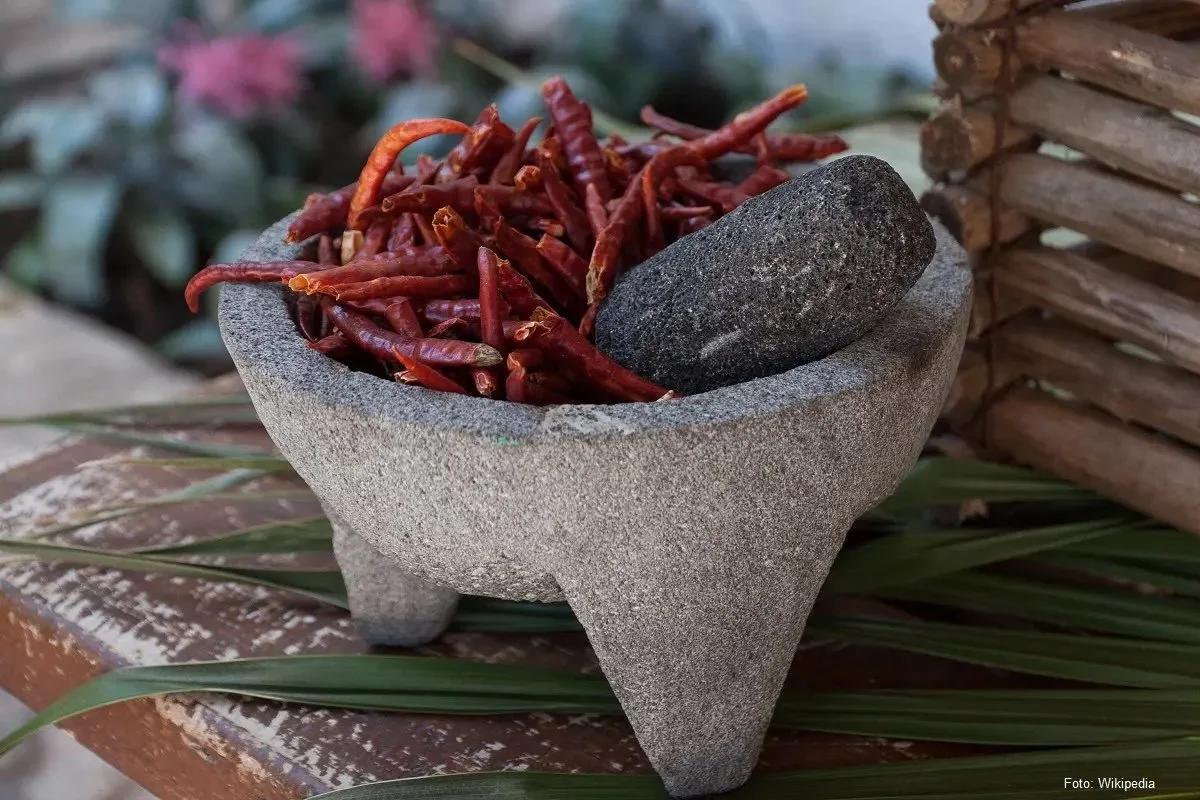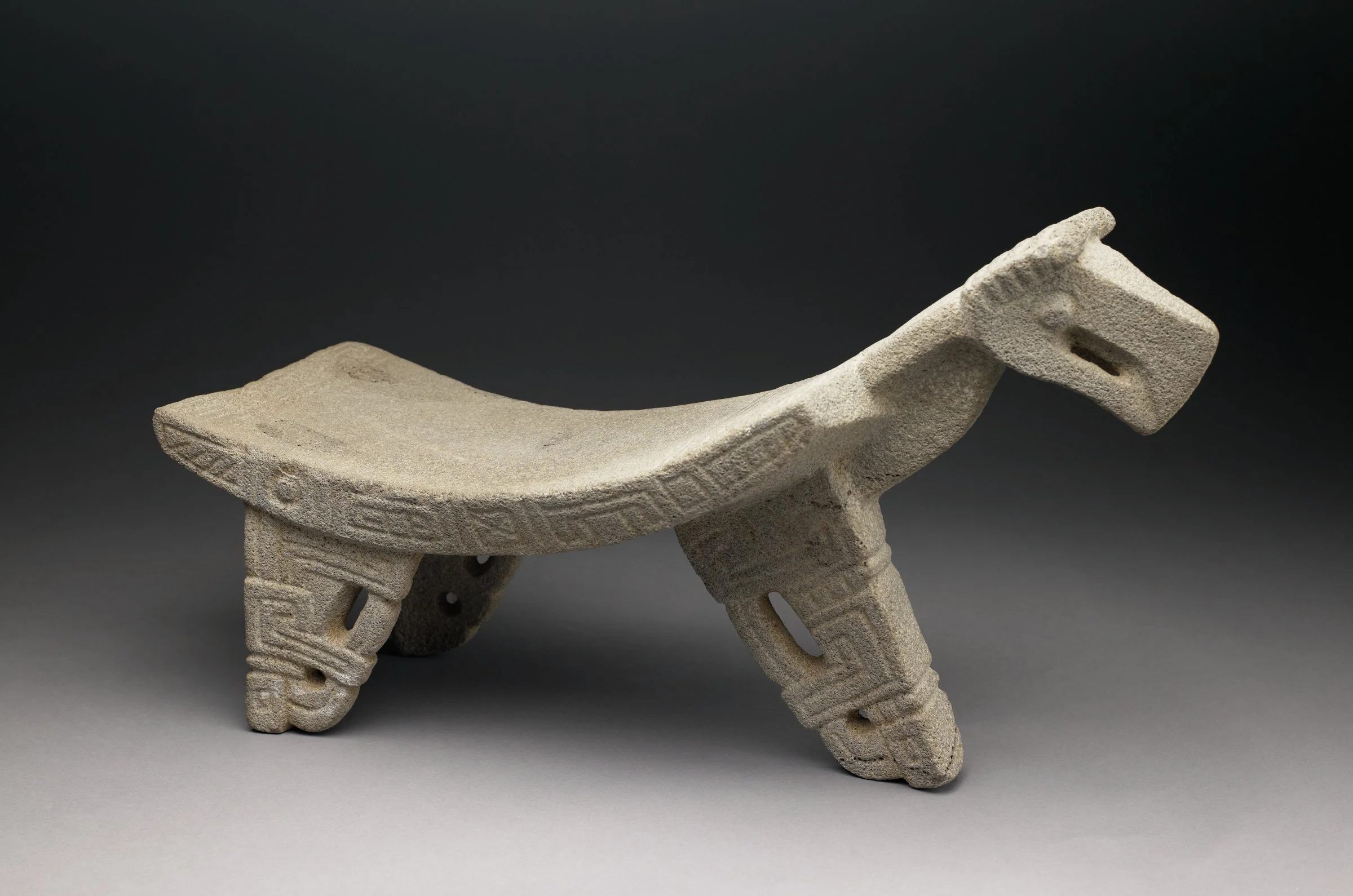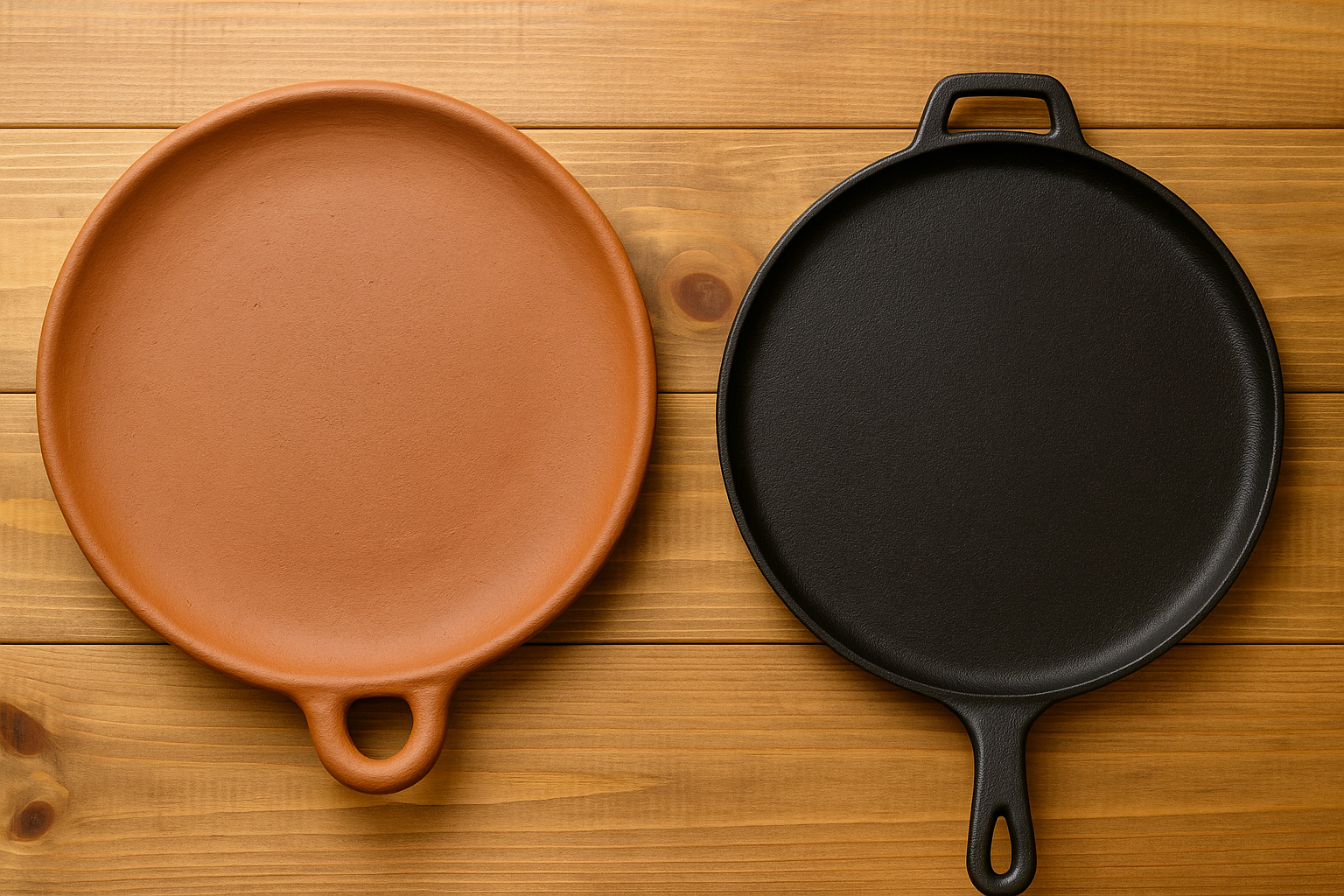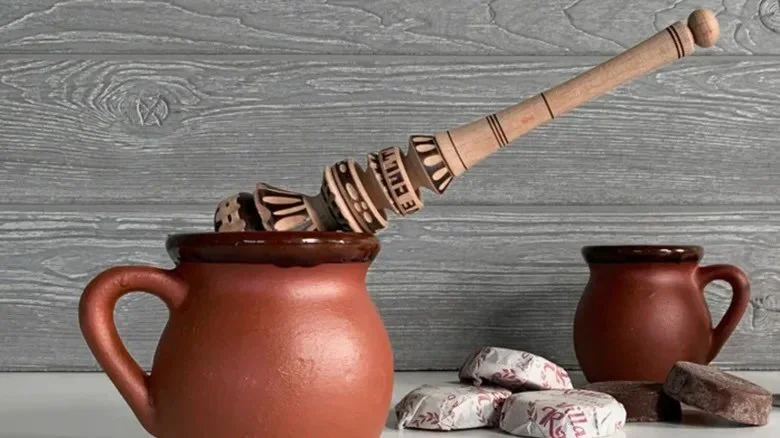The Ultimate Guide to Traditional Mexican Cooking Tools: History, Uses, and Care
What Are Traditional Mexican Cooking Tools?
Traditional Mexican cooking tools represent thousands of years of culinary evolution, deeply rooted in pre-Hispanic Mesoamerican cultures. These Mexican cooking tools have been passed down through generations, maintaining their essential role in creating authentic flavors and textures that define Mexican cuisine.
Unlike modern kitchen appliances that prioritize speed and convenience, traditional Mexican cooking implements emphasize technique, flavor development, and cultural connection. The most iconic tools include the molcajete (mortar and pestle), metate (grinding stone), comal (griddle), and various clay vessels that have remained virtually unchanged since ancient times.
Why Traditional Tools Matter in Modern Kitchens
The debate between traditional vs modern kitchen equipment extends far beyond mere nostalgia. Traditional Mexican cooking tools offer distinct advantages that modern appliances simply cannot replicate. When comparing a molcajete to a food processor, for instance, the crushing and grinding action of volcanic stone releases essential oils and flavor compounds more effectively than mechanical blades.
Professional chefs and home cooks alike recognize that these tools create superior textures and deeper flavors. The porous surface of a well-seasoned molcajete imparts subtle mineral notes, while a properly maintained comal develops a natural non-stick surface that enhances the taste of tortillas and roasted vegetables.
The Molcajete: Mexico’s Ancient Mortar and Pestle
History and Origins
The molcajete, derived from the Nahuatl word “molcaxitl” meaning “sauce bowl,” represents one of Mexico’s most significant culinary innovations. Archaeological evidence shows that huge molcajetes were used in pre-Hispanic Mesoamerican cultures, with some serving ceremonial purposes for high-status burials.
Traditionally carved from a single block of vesicular basalt, authentic molcajetes are distinguished by their three-legged design and accompanying tejolote (pestle). The volcanic rock’s porous nature creates an ideal grinding surface that maintains itself over time, with tiny bubbles in the basalt providing natural abrasiveness.
Molcajete
How to Use a Molcajete
Learning how to use a molcajete properly transforms your cooking experience. The key lies in understanding the press-and-twist motion that differs fundamentally from the vertical crushing action of conventional mortars. Begin by adding small amounts of ingredients to the bowl, using your wrist to rotate the tejolote forward while pressing downward with your palms.
For making salsa, start with the hardest ingredients like garlic and chilies, grinding them into a paste before adding softer elements like tomatoes. The molcajete’s rough surface breaks down cell walls more effectively than blender blades, releasing volatile compounds that create deeper, more complex flavors.
Seasoning and Care Instructions
Proper molcajete seasoning is essential for optimal performance and food safety. New molcajetes require curing to remove stone grit and create a seasoned surface. Begin by washing the molcajete with hot water and a stiff brush, then grind uncooked rice in small batches until the resulting powder appears white and grit-free.
The seasoning process involves creating a paste from serrano peppers, garlic, coarse salt, and oil, then working this mixture into every surface of the molcajete. Heat the seasoned molcajete in a 400°F oven for 20 minutes, then allow it to cool completely before washing. This process fills the porous surface and prevents food from sticking while adding flavor depth to future preparations.
Molcajete vs Food Processor
The molcajete vs food processor comparison reveals fundamental differences in both technique and results. While food processors use sharp blades that cut and slice ingredients, molcajetes crush and pound, creating distinctly different textures. The crushing action releases more essential oils and aromatic compounds, resulting in more flavorful salsas and spice blends.
Food processors generate heat through their motors, which can affect volatile flavor compounds in fresh herbs and aromatics. The molcajete’s stone surface remains cool, preserving delicate flavors while creating the chunky, rustic texture that characterizes authentic Mexican salsas.
The Metate: The Ultimate Grinding Stone
Pre-Columbian Origins
The metate represents one of humanity’s oldest food processing tools, with origins tracing back to the Upper Cenolithic period. These large, rectangular grinding stones were essential to pre-Columbian cultures, serving as the primary method for processing corn into masa for tortillas and tamales.
Pre-Columbian Metate
Archaeological evidence shows metates were used by Desert Archaic, Hohokam, and Patayan cultures, with each tool custom-made to fit its specific mano (grinding stone). The word “metate” derives from the Aztec “metlatl,” reflecting its deep cultural significance in Mesoamerican civilization.
Traditional Uses for Corn and Spices
The metate Mexican grinding stone served multiple purposes beyond basic food processing. Women would use metates to grind nixtamalized corn into masa, creating the foundation for countless Mexican dishes. The grinding action required specific techniques, with users kneeling behind the metate and using their body weight to apply pressure.
Beyond corn, metates processed dried chilies, spices, seeds, and nuts into fine powders and pastes. Wealthy families often owned multiple metates—one for cacao, another for corn, and separate ones for chilies and spices to prevent flavor contamination.
How to Use and Maintain a Metate
Using a metate requires proper technique and considerable physical effort. The traditional method involves taking a handful of nixtamalized corn and placing it near the high end of the metate, then using the mano with both hands to grind the material toward the lower end. The slight slope of the metate facilitates this grinding motion while collecting the finished product.
Modern metate users can apply these same principles to grind spices, make chocolate, or process other ingredients. Maintenance involves regular cleaning with water and a brush, avoiding soap to preserve the stone’s natural seasoning. Like molcajetes, metates improve with age and use, developing better grinding surfaces over time.
The Comal: Mexico’s Essential Griddle
Clay vs Cast Iron Comal
The comal Mexican griddle comes in two traditional forms: clay (comal de barro) and cast iron, each offering distinct advantages. Clay comales provide superior heat retention and distribute heat more evenly than metal alternatives, making them ideal for cooking tortillas and roasting vegetables.
Clay comal vs cast iron comparisons reveal that clay versions retain heat three to four times longer than metal, a property called thermal inertia. This characteristic allows for more consistent cooking temperatures and better flavor development. However, clay comales require more careful handling and specific seasoning with cal (lime) to prevent sticking.
Clay comal vs cast iron Comal
Cast iron comales heat more quickly and offer greater durability, making them practical for modern kitchens. They develop natural non-stick surfaces through proper seasoning and can withstand higher temperatures without risk of cracking.
Seasoning Your Comal
Learning how to season comal properly ensures optimal performance and longevity. For cast iron comales, begin by washing with warm, soapy water and drying thoroughly. Apply a thin layer of vegetable oil to all surfaces, then heat in a 350°F oven for one hour.
Clay comales require different seasoning techniques. Traditional methods involve applying a solution of cal (calcium hydroxide) mixed with water to create a protective surface that prevents sticking. This process, performed daily in traditional Mexican kitchens, fills the clay’s porous surface and creates an effective cooking surface.
Traditional Uses and Modern Applications
The comal’s versatility extends far beyond tortilla making. Traditional uses include toasting spices, charring vegetables for salsas, and cooking various masa-based foods like sopes and quesadillas. The flat surface allows for even heat distribution, making it ideal for roasting chilies, garlic, and tomatoes to develop complex flavors.
Modern applications have expanded to include cooking pancakes, searing meats, and even serving as a pizza stone. The comal’s ability to retain and distribute heat evenly makes it valuable for any cooking task requiring consistent temperature control.
Other Essential Mexican Cooking Tools
Tortilla Press
The tortilla press revolutionized Mexican cooking by making uniform tortillas quickly and efficiently. Traditional hand-patting methods, while still used in some regions, required considerable skill and time to achieve consistent results. Modern tortilla presses, typically made from cast iron or aluminum, consist of two flat plates connected by a handle mechanism.
Tortilla press uses extend beyond basic tortilla making to include preparing sopes, arepas, and other flatbreads. The key to successful pressing lies in using properly hydrated masa and lining the press with plastic or parchment paper to prevent sticking.
Tortilla Press
Tamalera (Tamale Steamer)
The tamalera steamer represents essential equipment for traditional tamale preparation. These specialized pots feature tall sides, tight-fitting lids, and perforated steamer inserts that allow tamales to cook upright in steam without touching water.
Tamaleras come in various sizes, from small 8-quart versions for home use to large commercial models holding dozens of tamales. The vertical design ensures even steam circulation while the tight lid maintains consistent cooking temperatures throughout the lengthy steaming process.
Molinillo for Chocolate and Champurrado
Molinillo for chocolate and champurrado
The molinillo is a traditional Mexican wooden whisk, hand-carved and often beautifully decorated, used to froth hot beverages like chocolate caliente and champurrado. Invented in colonial-era Mexico, it replaced earlier methods of whisking cacao drinks by hand, making it easier to achieve the signature foamy top prized in Mesoamerican chocolate traditions. To use it, the molinillo is placed between the palms and rolled back and forth, spinning in the pot or mug to blend ingredients and create froth. Beyond its practicality, the molinillo carries cultural significance—many families pass them down through generations as cherished kitchen heirlooms. Its rhythmic motion, creaking wood, and the rising aroma of chocolate create an experience that connects the drinker to centuries of tradition.
Olla de Barro (Clay Pot)
The olla de barro clay pot continues the tradition of clay cooking vessels that date back to pre-Columbian times. These pots excel at slow-cooking stews, soups, and beans, with their porous clay walls allowing for even heat distribution and natural flavor enhancement.
Clay pots require careful seasoning and maintenance to prevent cracking and ensure food safety. Their ability to retain heat makes them ideal for dishes requiring long, slow cooking, while their natural materials impart subtle earthy flavors that enhance traditional recipes.
Ollas de barro (clay pots)
Traditional vs Modern Kitchen Equipment: A Comparison
Flavor Differences
The traditional vs modern kitchen equipment debate centers significantly on flavor development. Traditional tools like molcajetes and metates crush ingredients rather than cutting them, releasing more essential oils and aromatic compounds. This mechanical difference creates measurably more intense flavors in salsas, spice blends, and pastes.
Modern appliances, while convenient, often generate heat that can alter volatile flavor compounds. The steel blades of food processors can also impart metallic notes, particularly when processing acidic ingredients like tomatoes and citrus. Traditional stone tools remain cool during use, preserving delicate flavors while adding subtle mineral notes from the volcanic rock.
Texture and Authenticity
Traditional Mexican cooking tools comparison reveals significant textural differences in finished products. Molcajete-made salsas exhibit the chunky, rustic texture that characterizes authentic Mexican cuisine, while blender-made versions tend toward smooth uniformity. The crushing action creates varied particle sizes that provide textural interest and better mouthfeel.
Stone tools also excel at controlling texture through technique variations. Skilled users can achieve anything from coarse, chunky consistencies to fine, smooth pastes using the same molcajete. This versatility surpasses most modern appliances, which offer limited texture control options.
Practical Considerations
Modern kitchen equipment offers undeniable advantages in speed and convenience. A food processor can create salsa in seconds, while a molcajete requires several minutes of manual work. For large-batch cooking, electric appliances become nearly essential for practical food preparation.
However, traditional tools provide superior durability and require no electricity or replacement parts. A well-maintained molcajete or metate can last generations, while modern appliances typically need replacement within years. The initial investment in quality traditional tools often proves more economical over time.
Care and Maintenance Guide
General Cleaning Tips
Proper Mexican cooking tools care ensures optimal performance and longevity. For stone tools like molcajetes and metates, use only water and stiff brushes for cleaning, avoiding soap which can penetrate the porous surface and affect flavors. Rinse thoroughly after use and allow to air dry completely before storage.
Clay cookware requires gentle handling to prevent cracking. Use warm water and soft brushes, avoiding sudden temperature changes that can cause thermal shock. For stubborn residue, create a paste with baking soda and water rather than using harsh detergents.
Storage Recommendations
Store traditional tools in dry, well-ventilated areas to prevent moisture buildup and potential mold growth. Molcajetes benefit from occasional light oil treatments to maintain their seasoning, while clay items should be completely dry before storage.
Cover stored tools with breathable cloths rather than plastic wraps, which can trap moisture and promote bacterial growth. Proper storage extends tool life and maintains the seasoned surfaces that improve with age and use.
Troubleshooting Common Issues
Common problems include food sticking to unseasoned surfaces, gritty textures from improperly cured tools, and cracking in clay items. Most issues resolve through proper seasoning techniques and careful temperature control during use.
For persistent sticking, re-season stone tools using the rice grinding method followed by oil treatment. Clay items with minor cracks can sometimes be repaired through careful heating and cooling cycles, though severely damaged pieces should be replaced for food safety.
Embracing Traditional Tools in Modern Cooking
Traditional Mexican cooking tools offer modern cooks an authentic connection to centuries of culinary wisdom while delivering superior flavors and textures impossible to achieve with contemporary appliances. The investment in quality traditional tools pays dividends through improved cooking results, enhanced flavors, and the satisfaction of mastering time-tested techniques.
Whether you’re seeking to create more authentic Mexican dishes or simply want to expand your culinary toolkit, traditional implements like molcajetes, metates, and comales provide valuable capabilities that complement modern kitchen equipment. The key lies in understanding when to use each tool type—embracing traditional methods for flavor development while leveraging modern convenience for efficiency where appropriate.
By incorporating these traditional tools into your cooking repertoire, you’re not just preparing food—you’re participating in a living culinary tradition that connects contemporary kitchens to the rich heritage of Mexican cuisine. The time invested in learning proper techniques and maintenance will reward you with generations of superior cooking results and deeper appreciation for this remarkable culinary culture.







